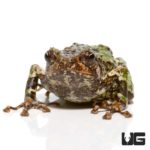Looking For Rain Frog for Sale? Discover Your Suitable Amphibian Buddy Right Here!
Looking For Rain Frog for Sale? Discover Your Suitable Amphibian Buddy Right Here!
Blog Article
The Finest Reptile Enclosures: Just How to Develop the Ideal Habitat
Creating the ideal habitat for reptiles is not practically putting them in a container or enclosure; it involves a thoughtful consideration of various variables that add to their total well-being. From the size of the room to the kind of substratum utilized, every aspect plays a crucial role in providing an environment where your reptile can thrive. By understanding the specific needs of your reptile species and applying the appropriate habitat configuration, you can ensure their health and happiness in bondage.
Picking the Right Room Size
When choosing an enclosure dimension for reptiles, it is important to consider their natural actions and room demands to ensure their well-being and wellness. Various reptile species have differing needs when it involves habitat room. Arboreal species like chameleons or tree serpents need vertical area for climbing and setting down, while earthbound types such as bearded dragons or leopard geckos need even more floor room for checking out and thermoregulation. Aquatic turtles like red-eared sliders demand rooms with both water and acreage for swimming and basking.
A general policy of thumb is to give ample room for the reptile to display all-natural habits, such as basking, concealing, climbing up, and foraging. By carefully considering the particular requirements of the reptile types in inquiry, proprietors can develop an ideal and improving environment that advertises total health and urges all-natural actions.
Establishing Up Correct Home Heating Components
To ensure the health and wellness of reptiles in their rooms, it is vital to thoroughly establish up correct heating elements. When establishing up heating components in a reptile enclosure, it is crucial to take into consideration the certain temperature needs of the types you are caring for.
One common and reliable burner for reptile units is a heat light or ceramic warm emitter. These warmth sources can be used to develop a temperature slope within the enclosure, permitting reptiles to move in between warmer and cooler areas as required. Additionally, under-tank hot pad or heat floor coverings can be used to supply belly warm, which is particularly helpful for reptiles that require additional heat to aid in food digestion.
Checking the temperature within the room making use of a thermostat is important to make certain that the home heating elements are preserving the proper temperature level range for your reptile. Frequently examine and readjust the burner as needed to produce a healthy and comfortable atmosphere for your flaky close friend.
Selecting Appropriate Lighting Fixtures

Supplying the Perfect Substrate
Selecting the appropriate substrate is important for creating a comfortable and ideal atmosphere for reptiles in their enclosures. Some reptiles, such as desert-dwelling species like bearded dragons, thrive on substratums like calcium sand or reptile rug, while others, like sphere pythons, choose coconut husk or aspen bedding to keep moisture levels.
Stay clear of substratums that can cause impaction, such as loosened substrates like sand or crushed rock, specifically for reptiles understood to consume their bed linens. Frequently cleaning and replacing the substrate is crucial to guarantee a sanitary and clean environment for your reptile.
Designing for Enrichment and Convenience
Thinking about the substrate's role in giving a foundation for natural habits and maintaining an ideal environment, boosting the reptile room with appropriate decorations is vital for both enrichment and convenience. Decors such as branches, rocks, hideouts, and man-made plants not just create a much more aesthetically enticing environment but likewise serve useful functions. Branches supply climbing up opportunities for arboreal types, while rocks can function as basking spots for heat. Hideouts supply shelter and safety, lowering stress levels for the reptile. Fabricated plants not only enhance the appearances but also offer concealing places and enrichment by allowing the reptile to explore and communicate with its setting. When enhancing the unit, it is vital to think about the reptile's species-specific requirements and habits to produce an area that advertises physical and mental well-being. By incorporating a variety of decorations that mimic the reptile's all-natural environment, proprietors can guarantee their family pet's comfort and promote their natural impulses, eventually resulting in a better and healthier reptile.
Final Thought
Creating the best environment for reptiles is not simply about putting them in a container or unit; it involves a thoughtful consideration of different variables that Read Full Report contribute to their overall wellness.Choosing the ideal substratum is necessary for creating a comfortable and see it here appropriate setting for reptiles in their units. Some reptiles, such as desert-dwelling species like bearded dragons, flourish on substrates like calcium sand or reptile rug, while others, like sphere pythons, favor coconut husk or aspen bed linens to keep moisture levels.
By integrating a range of designs that simulate the reptile's all-natural environment, proprietors can ensure their family pet's comfort and stimulate their natural instincts, ultimately leading to a happier and much healthier reptile.
In verdict, developing the ideal environment for reptiles entails picking the ideal unit dimension, heating components, lighting components, substratum, and designs.
Report this page